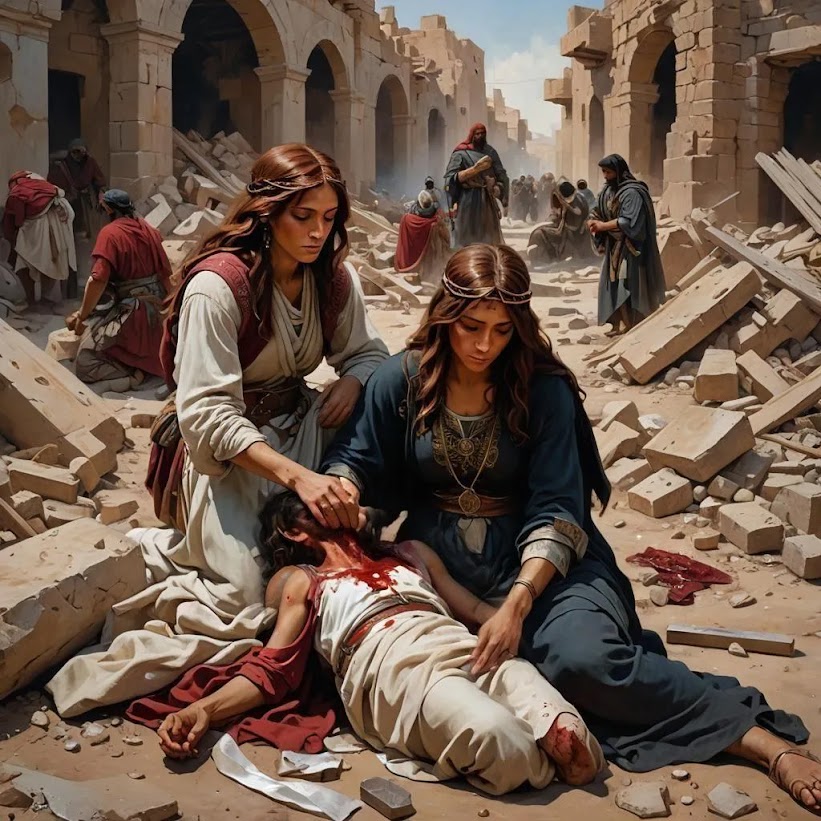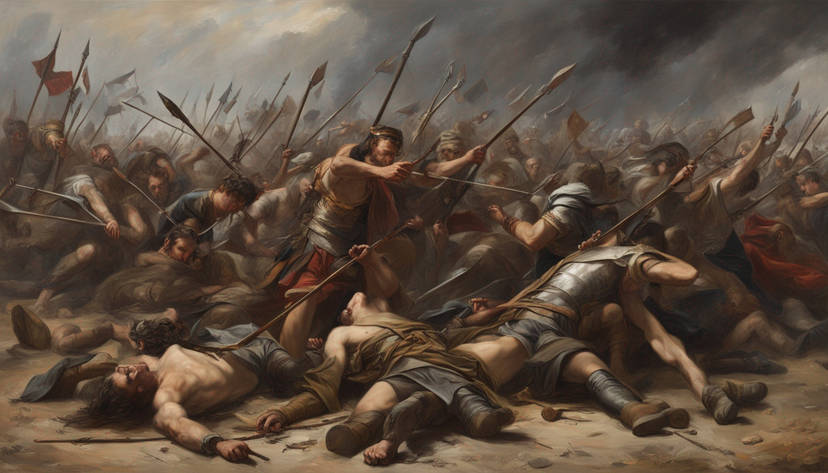Alma at peace
AI Generated
neural.love
The sun hangs low in the sky, casting a warm golden glow across the sandy shores. Waves gently lap against the land, creating a soothing sound that mingles with the distant calls of seagulls.
Sitting gracefully on the shoreline, a breathtaking Bedouin warrior woman captures the attention of all who gaze upon her. Her flowing hair cascades down her back, with piercing eyes reflecting a fierce determination, she exudes an air of confidence.
Clad in ornate Arab armor, every detail meticulously rendered, the woman sits with her legs submerged in the crystal-clear water. The armor boasts intricate engravings, reflecting the rich cultural heritage from which she hails. Its polished surfaces glimmer with hints of gold and silver, mirroring the radiance of the setting sun.
Beside her, lies her loyal companion, a majestic leopard. Its dappled fur glistens under the faint mist that arises from the sea. The leopard's powerful presence is juxtaposed by its gentle demeanor, tamed by the woman's unwavering bond with it.
As the woman gazes out onto the horizon, her expression conveys a sense of tranquility and inner strength. The rhythmic crashing of the waves against the shore seems to echo her warrior spirit, a testament to her resilience and adaptability in the face of adversity.
This hyper realistic portrayal captures the extraordinary beauty and power within this Bedouin warrior woman, and invites viewers to immerse themselves in her captivating presence on this serene beach.
Alma was by far the most distinguished of women because of her many superior qualities, especially because of the bravery she demonstrated in defense of her people.
Islam elevated the status of women, treating them on an equal footing with a man. Women had a newfound independent identity, in the physical and spiritual spheres.
Islamic history is full of warrior women who fiercely fought for what they believed in, defended what they cherished, and defied all expectations and became legends.
The Warrior Woman is an ancient archetype that is not well known because the stories have been both forgotten and suppressed. Mythology is full of warrior goddesses.
Traditionally, the Bedouin were among the most dangerous of desert tribes, fighting among themselves when outsiders weren’t available. Constantly on the move to find new pastures for their livestock, they learned to live with the minimum of possessions and little external support in the harshest of lands. Loyalty to tribe and family was all that helped a warrior survive. More on Desert Warriors
Please visit my other blogs: Art Collector, Mythology, Marine Art, Portrait of a Lady, The Orientalist, Art of the Nude and The Canals of Venice, Middle East Artists, 365 Saints, 365 Days,
and Biblical Icons,
also visit my Boards on Pinterest and deviantart
Images are copyright of their respective owners, assignees or others.
Some Images may be subject to copyright
I don't own any of these images - credit is always given when due unless
it is unknown to me. if I post your images without your permission, please tell
me.
I do not sell art, art prints, framed posters or reproductions. Ads are
shown only to compensate the hosting expenses.
If you enjoyed this post, please share with friends and family.
Thank you for visiting my blog and also for liking its posts and pages.
Please note that the content of this post primarily consists of articles
available from Wikipedia or other free sources online.






























